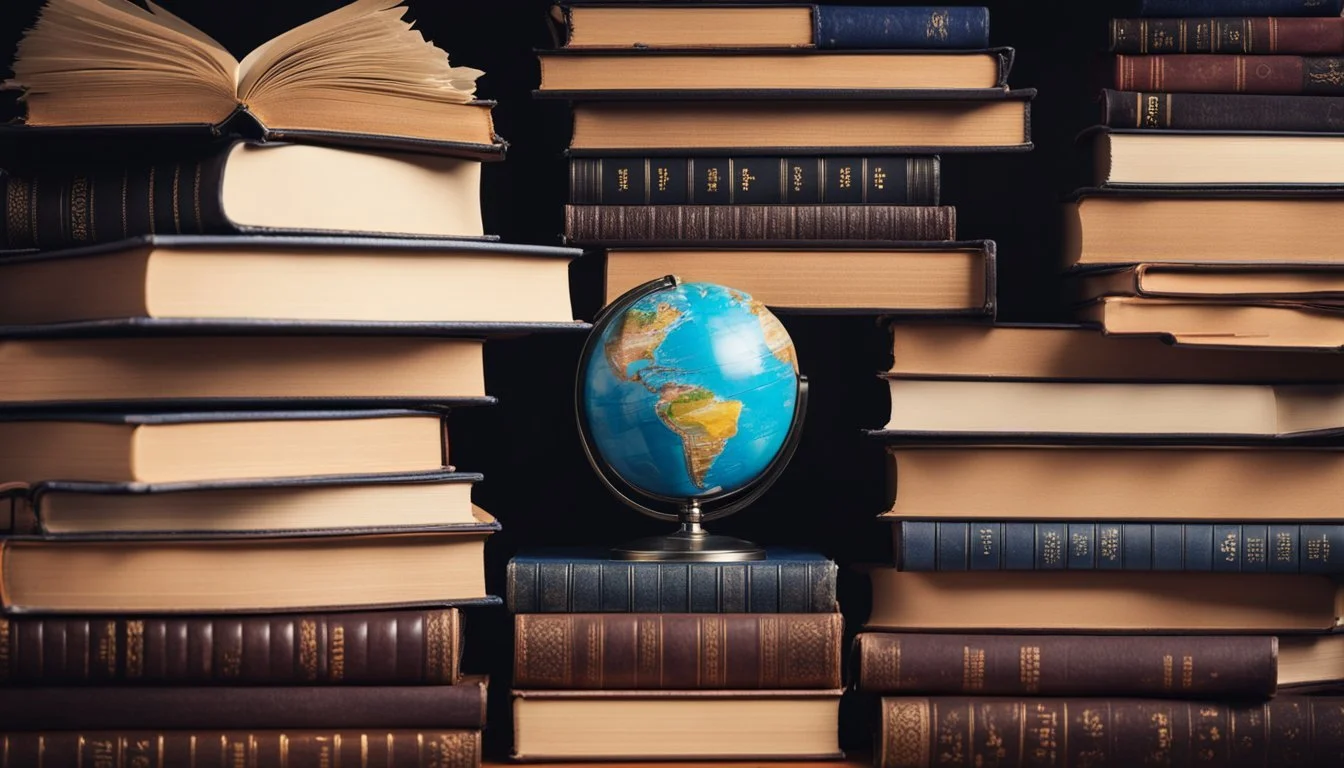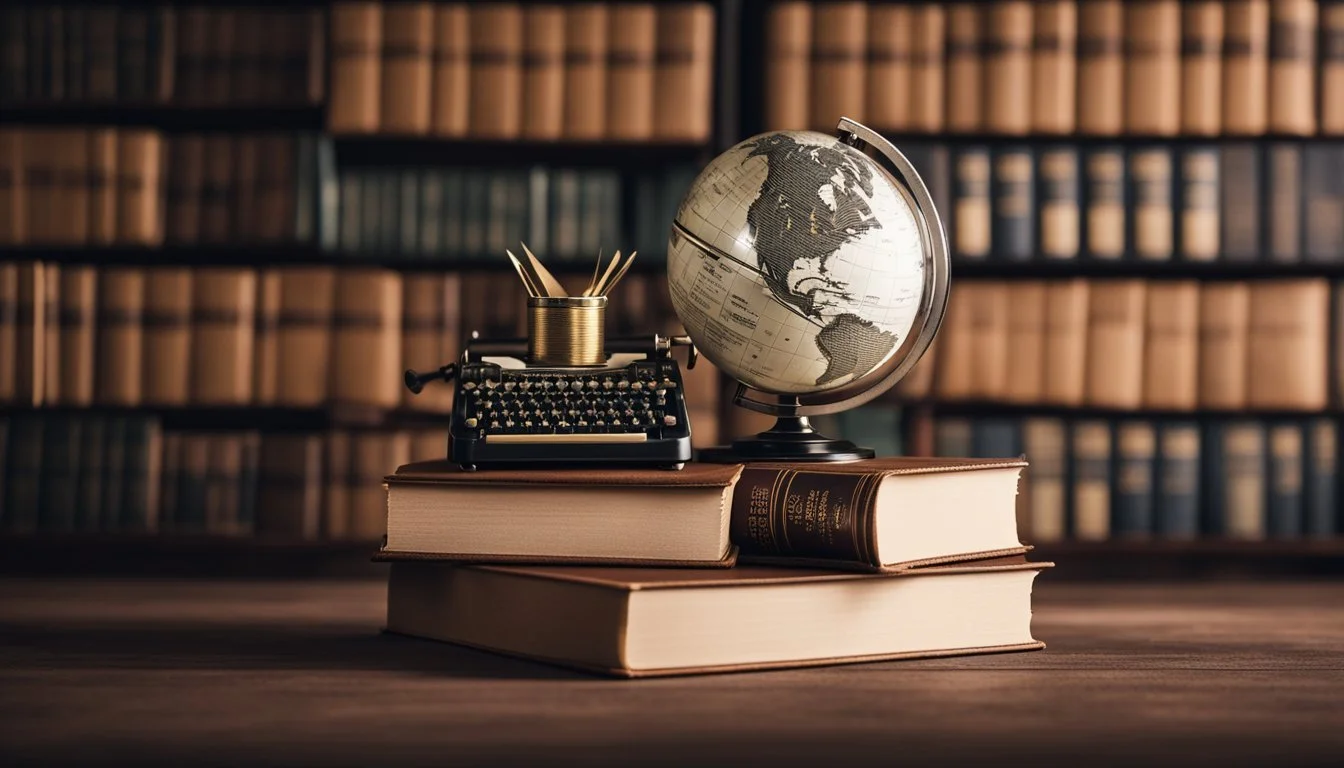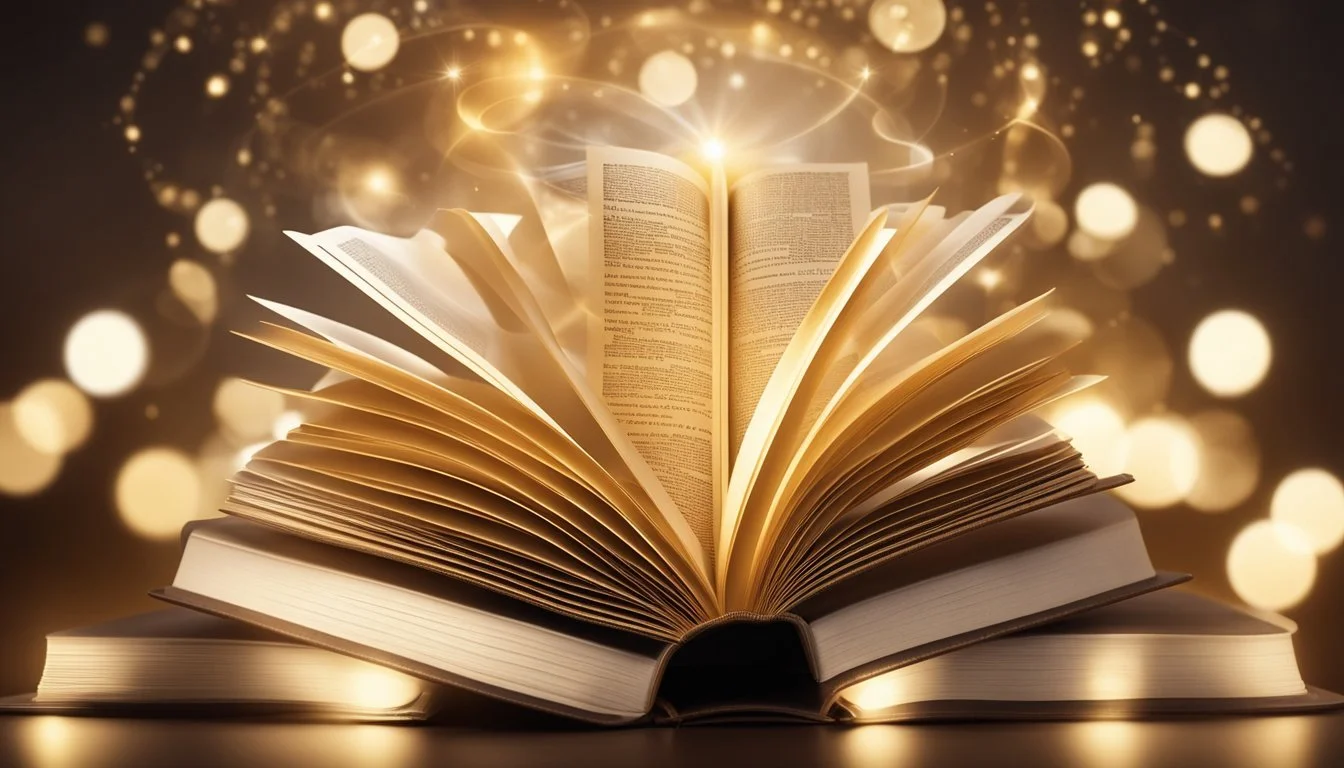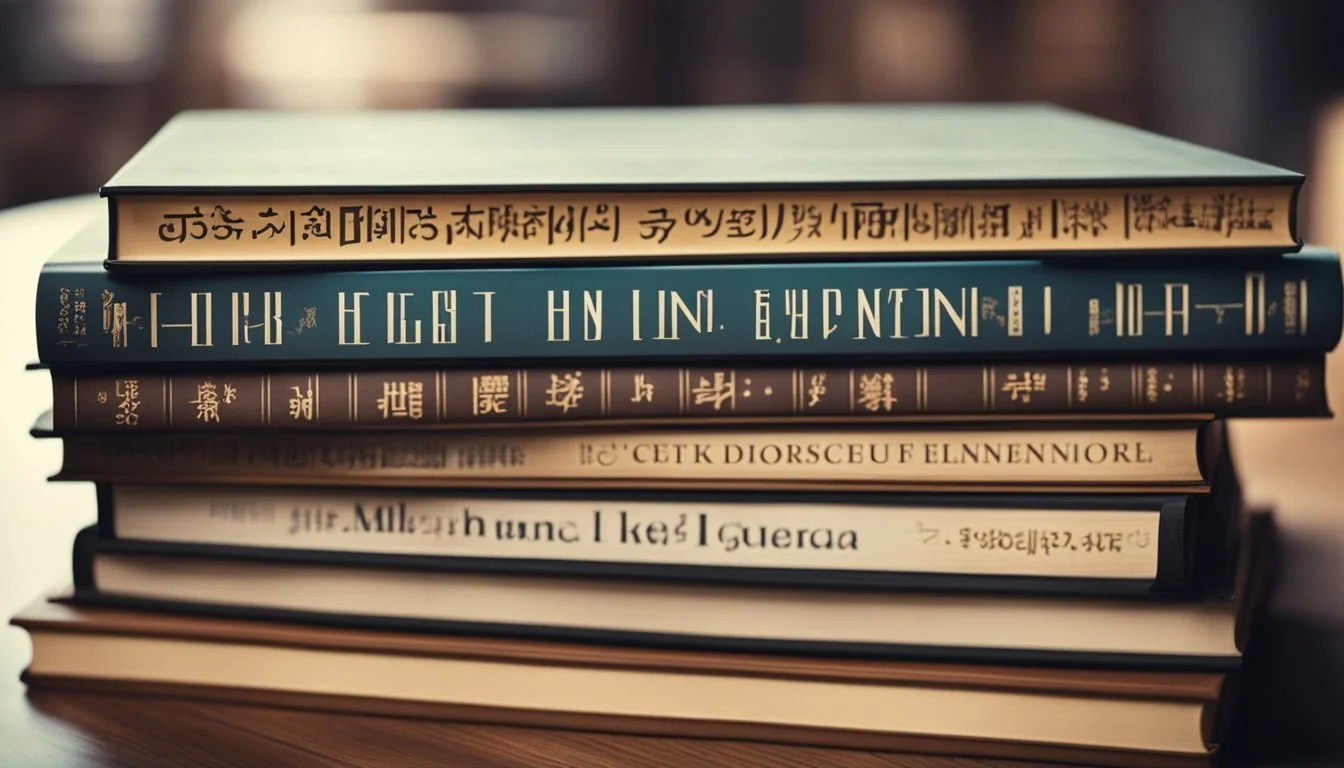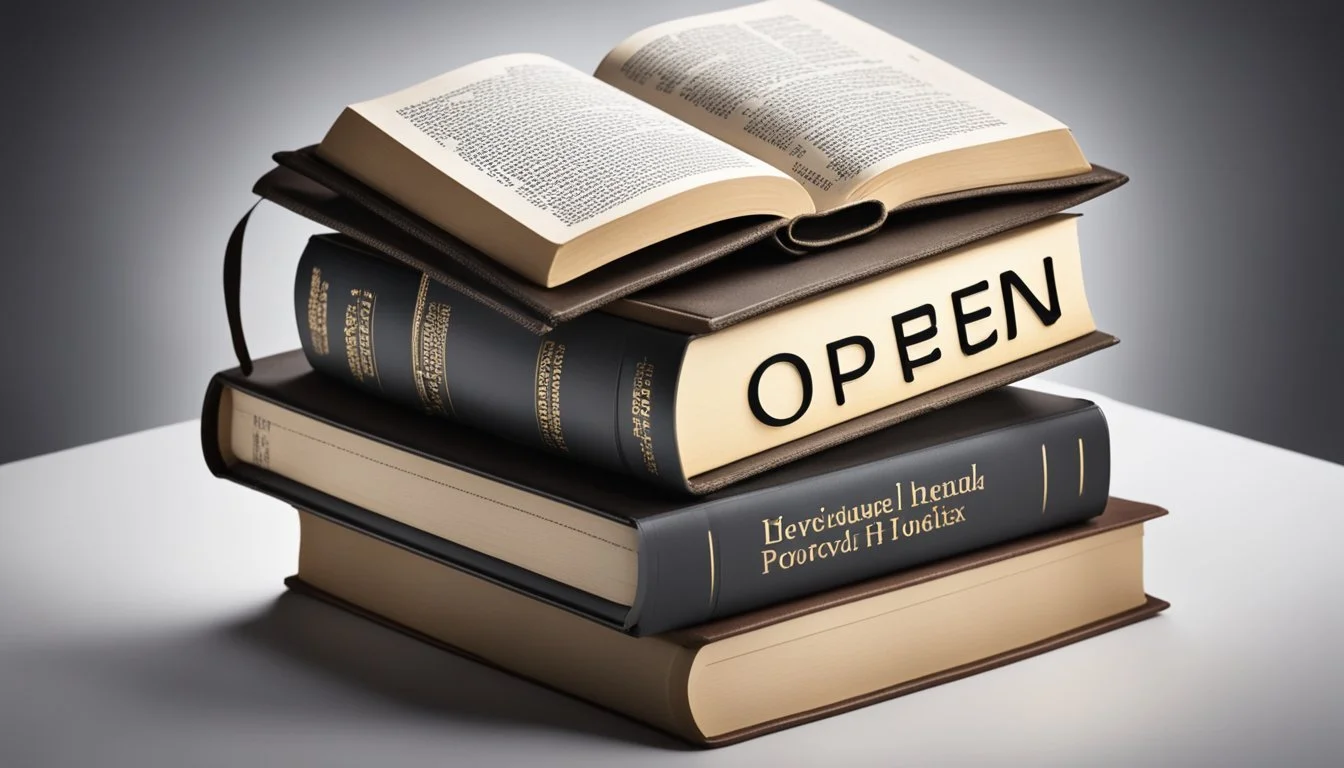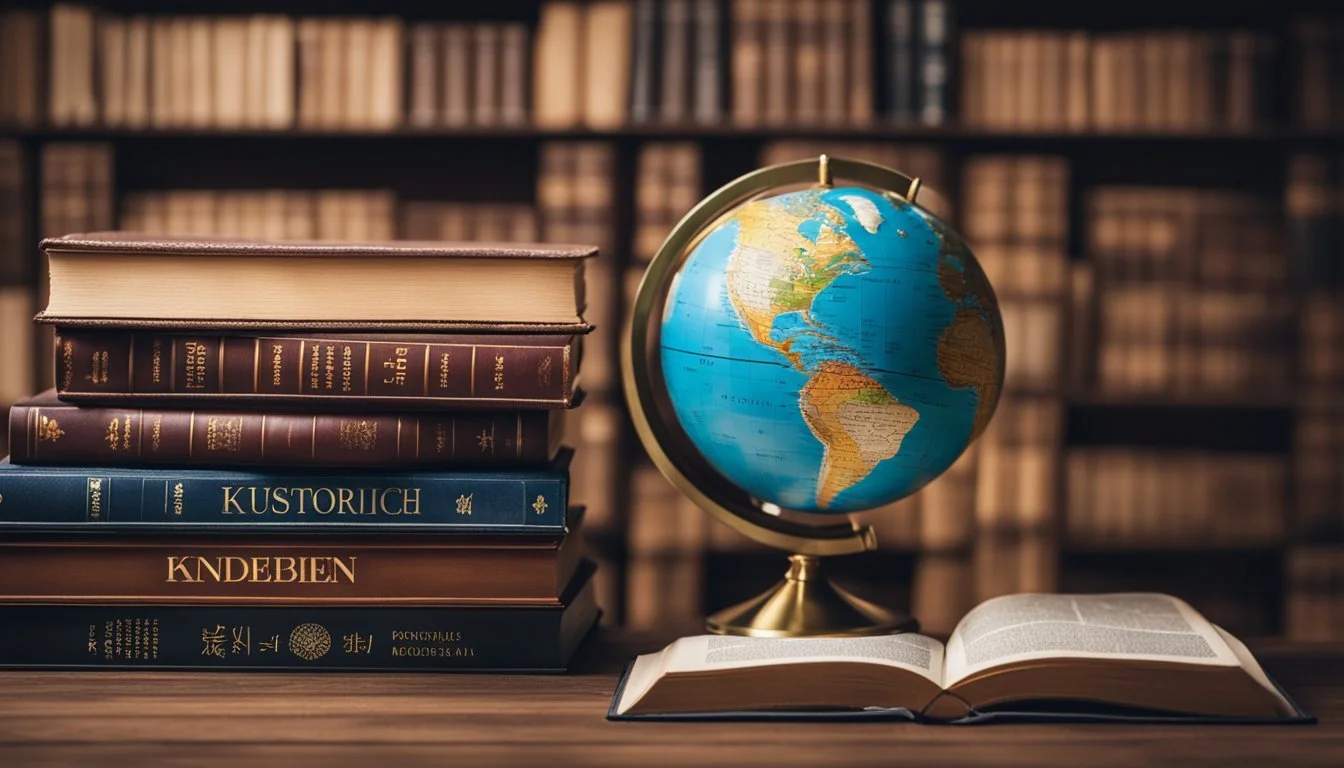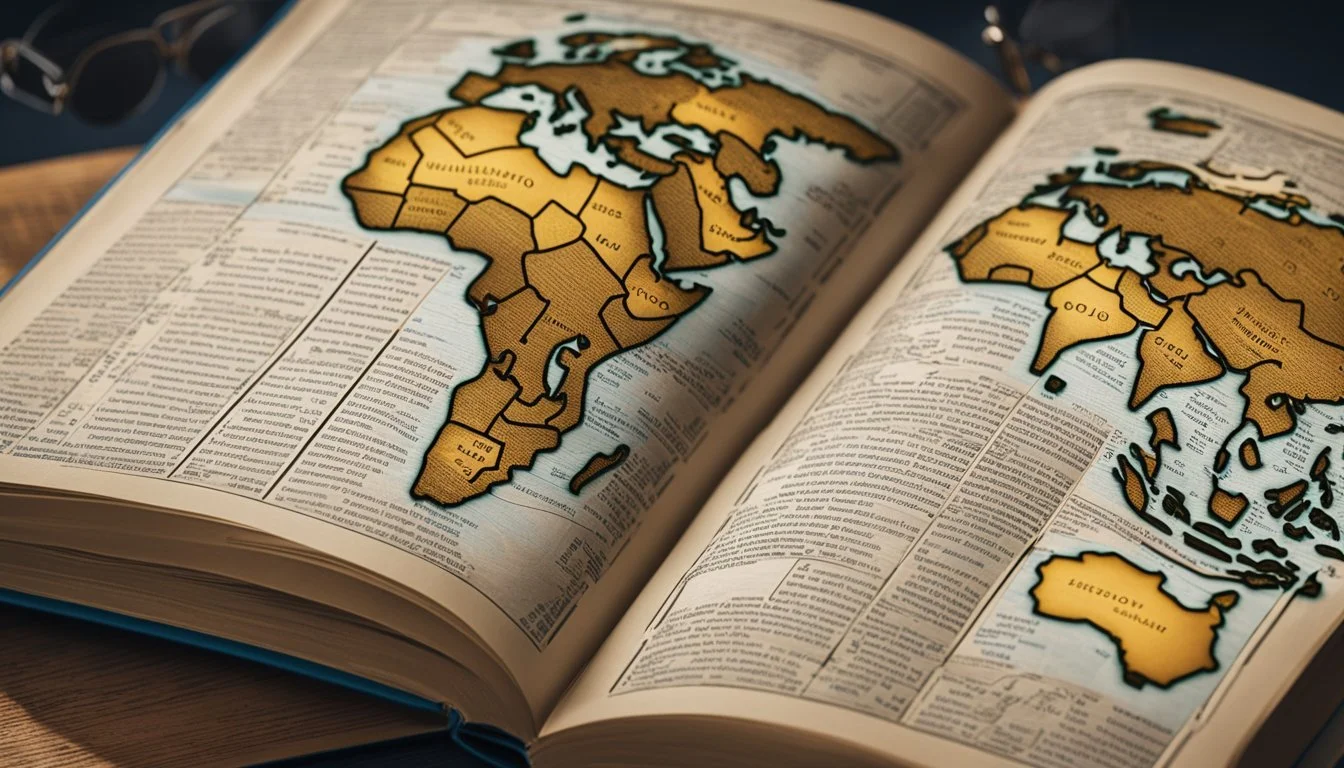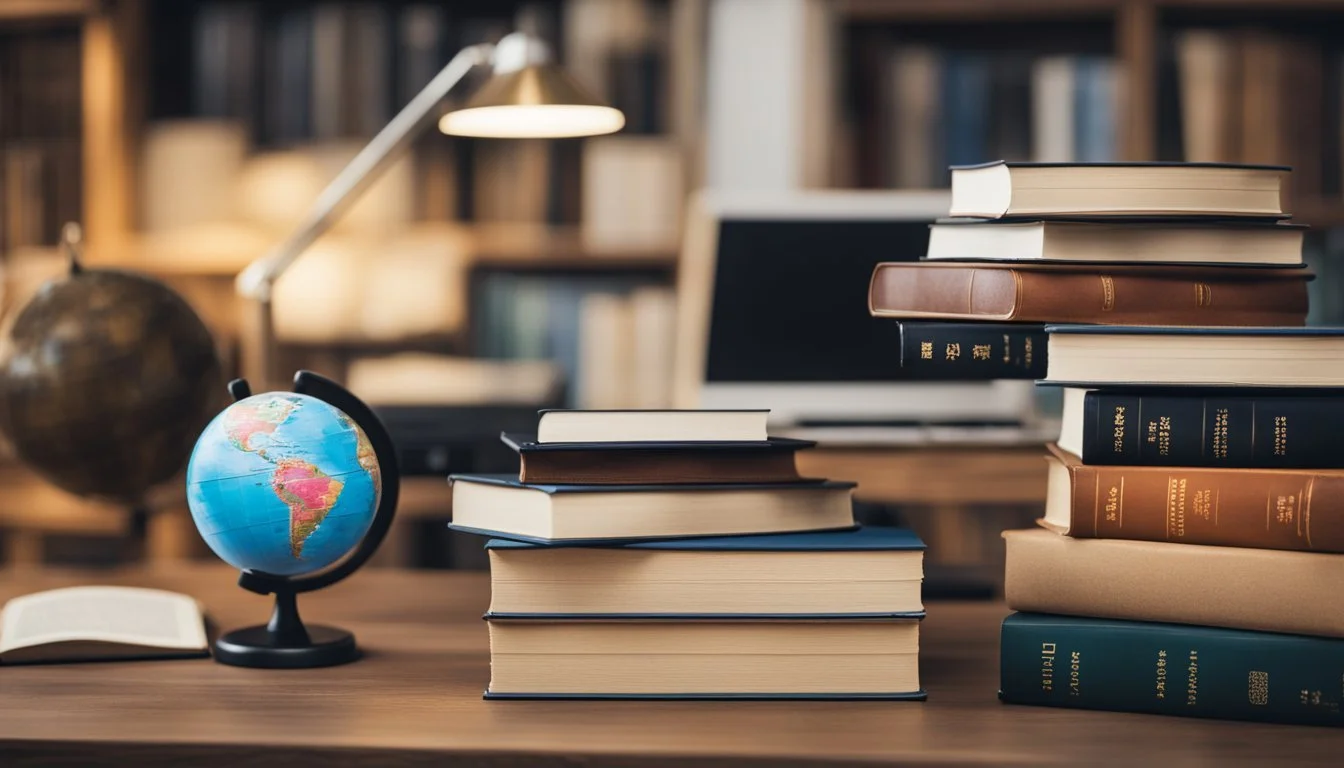12 Documentaries Exploring the World of Literary Translation
Insights and Journeys
The intricate process of literary translation often remains hidden behind the seamless flow of translated text that readers enjoy. Yet, this fascinating art involves much more than just converting words from one language to another; it encompasses capturing the nuance, style, and cultural context of the original work. This article delves into how documentaries vividly illustrate the dedication and skill required to achieve such translations.
Why is literary translation so compelling to explore? The answer lies in the blend of linguistic precision and creative artistry needed to preserve the original's essence. The selected documentaries not only uncover the challenges faced by translators but also celebrate their crucial role in making literature accessible to global audiences. Through these visual narratives, viewers gain a deeper appreciation of the tireless effort that goes into creating a bridge between diverse cultures through literature.
1) Lost in Translation (2003)
Lost in Translation is a feature film that delves into themes of isolation and cultural displacement. Directed by Sofia Coppola, the story follows Bob Harris, a washed-up actor, and Charlotte, a young woman grappling with her sense of self. Both characters are navigating the complexities of life in Tokyo, a city foreign to them.
Language and translation play crucial roles in the film. The title itself hints at the difficulties in communication the protagonists face. One notable aspect is how Coppola uses the language barrier to deepen the characters' sense of alienation. Miscommunication creates both comic and poignant moments throughout the narrative.
Cinematography is another critical element in conveying themes without relying solely on dialogue. The film uses visual storytelling to highlight the emotional distance between characters and their environments. This method subtly underscores the often unspoken, yet deeply felt, disconnection experienced by Bob and Charlotte.
The movie has received praise and criticism for its portrayal of Japanese culture. While some applaud its existential exploration, others point to cultural insensitivity. Despite the debate, Lost in Translation remains an essential viewing for those interested in how language and translation impact human connections.
For more information, visit IMDB.
2) The Translator
Understanding the role of a literary translator is paramount when exploring documentaries on literary translation. The translator acts as a bridge between languages, balancing fidelity to the original text with readability in the target language.
Translators often face the challenge of preserving cultural nuances. They must grasp not only the language but also the context and subtleties of the source material. This requires a deep knowledge of both the source and target cultures.
For example, Anthea Bell's work on translating both Franz Kafka and Asterix comics showcased her ability to navigate vastly different genres while maintaining the essence of the original works. Her skill in creating an "illusion" that the translation is the original text is widely celebrated.
Aron Aji, known for translating Turkish literature, demonstrates the diverse expertise required in this field. His translations have made Turkish literary works more accessible to English-speaking audiences, highlighting the translator's role in cultural exchange.
Dynamic Equivalence Translation is another approach where translators focus on conveying the same message and tone as the original. This method ensures that readers of the translated text receive an experience equivalent to that intended by the original author.
In the broader context, literary translators contribute significantly to global literature by opening up access to stories and ideas confined by language barriers. Their work allows readers to explore different cultures and perspectives through translated narratives.
For more detailed information, refer to sources such as Wikipedia Translators.
3) The Woman with the Five Elephants (2010)
The documentary "The Woman with the Five Elephants" offers an intimate look at the life of Svetlana Geier. Geier is renowned for her translations of Dostoyevsky's five great novels into German. These novels are considered monumental works in Russian literature.
Directed by Vadim Jendreyko, the film portrays Geier's meticulous and passionate approach to translation. It highlights her unique bond with the texts she translates. The documentary delves into her life story, revealing how her experiences have shaped her work.
The film also captures Geier's return to her childhood home in Ukraine. This journey back in time is interwoven with her literary achievements. Viewers get a glimpse of the personal history that has influenced her translations.
Svetlana Geier is portrayed as a tireless mediator of language and culture. The documentary underscores the depth of dedication required to translate literature at such a high level. It becomes clear that Geier's translations are more than just linguistic exercises; they are acts of cultural preservation.
For those interested in the intersections of life and literature, this film is a compelling watch. Learn more about "The Woman with the Five Elephants" on IMDb.
4) La traducción prohibida
"La traducción prohibida" (2017) delves into the complex world of translations that were banned or censored throughout history.
This documentary highlights the challenges translators face when dealing with politically sensitive or culturally controversial material. Translators often work under risky conditions to ensure that important literary works reach a wider audience.
The film also explores the impact that censorship can have on literature and culture, shedding light on the role that translation plays in preserving or altering the integrity of texts.
Throughout the documentary, viewers gain insight into key historical examples where translations were pivotal in societal change or repression.
Learn more about "La traducción prohibida" on IMDb.
5) Found in Translation (2012)
"Found in Translation" explores the intricate world of translation and its expansive influence on global communication and cultural exchange. The documentary reveals how translators bridge languages and cultures, contributing to international understanding.
Through interviews with prominent translators and authors, the film delves into their experiences and challenges. It highlights the often unnoticed yet critical work of translation in making literature accessible to diverse audiences.
"Found in Translation" features various examples of translated works that have shaped global literature. It showcases the delicate balance translators must maintain between accuracy and cultural sensitivity.
For more information, visit Found in Translation on IMDb.
6) The Whispering Translator (2014)
"The Whispering Translator" is a fascinating examination of the subtleties of literary translation. This documentary, directed by Maria Rodriguez, provides an intimate look at translators who work behind the scenes to make foreign texts accessible to wider audiences.
The film focuses on several renowned translators and their meticulous process of converting literature from one language to another. It sheds light on the challenges they face in maintaining the integrity and tone of the original work.
Viewers gain insight into the translators' world, understanding their dedication to capturing the essence of the literature. The documentary covers different genres, from poetry to novels, highlighting the diverse skills required for various types of texts.
By watching "The Whispering Translator," audiences are introduced to the unsung heroes of the literary world. These professionals play a crucial role in bridging cultural divides, allowing readers to enjoy works from around the globe.
For more information about the film, visit its IMDB page.
7) In the Shadow of Words
In the Shadow of Words (2015) presents an intimate look into the art of literary translation. This documentary uncovers the intricate process translators undergo to bring foreign texts to new audiences while retaining the original's essence.
The film follows several renowned translators as they navigate both linguistic and cultural challenges.
Through candid interviews, viewers gain insight into the emotional and intellectual labor involved in translating literature. Moments of frustration and triumph are depicted, illustrating not only the technical skill required but also the heartfelt passion behind each translation.
Real-world examples are highlighted, demonstrating how translated works impact global literature.
The documentary captures the delicate balance translators strike between fidelity to the source material and adaptability to the target language. It showcases their deep respect for the original authors and their commitment to conveying the same depth of meaning and emotion.
Viewers leave with a greater appreciation for the skill and sensitivity required in the field of literary translation.
For more information about In the Shadow of Words, visit IMDb.
8) Journey Between Languages
"Lost in Translation" (2003) directed by Sofia Coppola, is not a documentary but a film that exemplifies the communication gap and cultural nuances through language barriers. It is set in Tokyo and showcases the bond between an aging actor and a young woman navigating foreign landscapes. Learn more here.
"Found in Translation" (2013) delves into the intricacies of translating literature. This documentary provides examples from various famous works and highlights the challenges translators face. It emphasizes the importance of context, cultural nuances, and maintaining the original intent of the author. Learn more here.
"Word Wars" (2004) is another insightful documentary. While it primarily focuses on competitive Scrabble, it touches on linguistic diversity and the complexities of language. The film can be seen as a metaphor for the broader challenges of translation. Learn more here.
"The Story of Language" (2001) explores the origin and evolution of languages worldwide. It demonstrates how translation serves as a bridge between languages, preserving the richness of diverse cultures for future generations. Learn more here.
These documentaries capture the essence of navigating linguistic landscapes. Each one offers a unique perspective on how language connects people across different cultures. With each journey, viewers gain a deeper appreciation for the art and science of translation.
9) The Mystery of Translation
Translation represents an intricate balance between fidelity to the original text and creativity. Each word holds a nuanced meaning that may not perfectly align with the target language. The 2013 documentary "The Mystery of Translation," featuring insights from renowned poets like W.S. Merwin, dives into these complexities with a focus on how language can both unite and divide cultures.
The film explores the reciprocal relationship between author and translator. Translators are depicted not merely as conduits, but as artists who reconstruct narratives. Through intimate interviews, viewers gain a deeper appreciation of the translator's role in preserving literary essence.
Several segments of the documentary scrutinize notable works and their translations. It investigates the challenges faced when translating poetry, where rhythm and metaphor often become entangled in linguistic barriers.
Personal anecdotes from translators provide a human aspect to the cerebral topic. Their testimonies reveal the emotional and intellectual investment required for translating culturally significant texts. It sheds light on how translators bridge gaps between diverse literary worlds.
For more information on "The Mystery of Translation" (2013), visit IMDB.
10) Guardians of Lost Languages
This documentary focuses on the efforts to decipher ancient scripts that have long eluded linguists and historians. It reveals the stories behind scripts such as Meroitic hieroglyphs, the Etruscan alphabet, and the Indus Valley Sealstones.
Scholars and experts share their insights and the challenges they face in their quest to unlock these ancient languages. The film dives into the historical contexts of these scripts.
The documentary not only highlights the scripts themselves but also offers a glimpse into the lives of the people who created them, making it a rich and engaging watch.
Made in 2018.
11) Translating Memories
"Translating Memories" (2023) is a documentary that dives into the intersection of Memory Studies and Translation Studies. It examines how translating works of literature helps in unpacking transcultural memory dynamics, especially memories of violent pasts.
The film features various scholars discussing the impact of translation on collective memory. They explore how translations can either bridge cultural gaps or highlight unresolved historical tensions.
Through interviews with translators and memory studies experts, the documentary sheds light on how different cultures remember and interpret historical events. The dialogue between these scholars showcases the importance of accurate translation in preserving the integrity of memories.
For more information: IMDB
12) Between the Lines (2020)
"Between the Lines" examines the intricate work involved in literary translation, showcasing the dedication and skill of translators who bridge the gap between languages.
The documentary features interviews with translators from various linguistic backgrounds, providing insight into their creative processes and the challenges they face.
Viewers learn about the translators' efforts to maintain the tone, style, and nuances of the original text while making it accessible to a new audience.
Translators discuss the cultural context and its impact on their work, explaining how they adapt certain elements to resonate with readers from different backgrounds.
This film is an essential resource for anyone interested in the detailed and often unsung work of literary translation.
For further information, visit IMDb.
The Role of Literary Translation
Literary translation serves as a critical bridge between cultures, enabling the sharing of literature beyond linguistic borders. This field is essential for promoting diversity, yet it brings forth numerous challenges that translators must navigate.
Importance of Cross-Cultural Exchange
Literary translation plays a vital role in fostering cross-cultural exchange. By translating works of literature, translators make it possible for readers around the world to access and enjoy stories, ideas, and knowledge from different cultures.
This exchange enriches global cultural understanding and broadens perspectives. For instance, translating ancient texts like Gilgamesh introduces modern readers to ancient civilizations. Additionally, contemporary works from diverse authors become accessible, promoting empathy and cultural awareness.
Key Points:
Expands access to global literature.
Promotes cultural empathy and awareness.
Introduces historical texts to modern audiences.
Challenges Faced by Translators
Translators face multiple challenges in their work. One significant challenge is maintaining the original tone, style, and meaning of a text while adapting it to a different language. Literary nuances, idiomatic expressions, and cultural references can be difficult to translate accurately.
There is also the challenge of balancing fidelity to the original text with making it relatable to the target audience. Besides linguistic hurdles, translators must navigate differing literary conventions and norms, ensuring the translated work resonates with new readers without losing its original essence.
Key Points:
Preserving original tone and style.
Adapting idiomatic expressions and cultural references.
Balancing fidelity with relatability.
Notable Figures in Literary Translation
This section explores influential literary translators and the awards that recognize their invaluable contributions. Whether introducing global literary works to new audiences or maintaining cultural integrity, these translators leave an indelible mark on literature.
Influential Translators and Their Work
Anthea Bell: Known for her translations of Franz Kafka and W.G. Sebald, Anthea Bell also made the French Asterix comics accessible to English speakers. Her ability to convey humor and nuance made her translations nearly indistinguishable from the originals.
Lara Vergnaud: Vergnaud's work includes translations of Mohand Fellag, Joy Sorman, and Ahmed Bouanani. Her skill lies in capturing the unique voices of these authors, ensuring the English translations offer the same depth as the originals.
Tu An: Under the pen name Tu An, Jiang Bihou translated Western poetry, including Walt Whitman’s works, into Chinese. His translations, starting with "Gusheng" (Drum Roll) in 1948, played a pivotal role in bridging Western and Chinese literary traditions.
Awards and Recognitions in Literary Translation
The field of literary translation recognizes excellence through prestigious awards.
PEN Translation Prize: This award honors outstanding translations of book-length works. It highlights the translator’s role in bringing world literature to English-speaking audiences.
Best Translated Book Award (BTBA): Given annually by Three Percent, this award celebrates exceptional books translated into English. It aims to increase the availability and appreciation of international literature in the U.S.
National Translation Award: Presented by the American Literary Translators Association (ALTA), this award distinguishes itself by evaluating both the quality of the translation and the original work.
These awards not only celebrate individual achievements but also underscore the critical role of translators in global literary dialogue.
Technical Aspects of Literary Translation
The technical aspects of literary translation involve precise attention to detail, encompassing the nuances between translating poetry and prose, as well as incorporating techniques such as localization and adaptation. Here’s an in-depth look at these critical components.
Translating Poetry Versus Prose
Translating poetry often involves maintaining rhythm, meter, and rhyme schemes. It is crucial to preserve the emotional impact and aesthetic qualities of the original piece. Translators need to find equivalent expressions and structures in the target language that convey the same artistic nuance.
Prose translation focuses more on clarity and accuracy of content. This type includes novels, essays, and articles. The goal is to mirror the original style and tone while ensuring readability. Maintaining the author's voice and intent is vital, but the sentence structure may be adjusted for natural flow in the target language.
Localization and Adaptation Techniques
Localization entails adapting the content to align with the cultural context of the target audience. This can involve changing names, settings, or cultural references to make the text more relatable. Adaptation goes a step further by modifying sections to fit different literary traditions or societal norms, ensuring the translation resonates with the new audience.
For instance, idioms or phrases with cultural significance might be replaced with local equivalents. This technique ensures that the translated work maintains its intended impact and relevance while adhering to the target language's customs and idioms.


